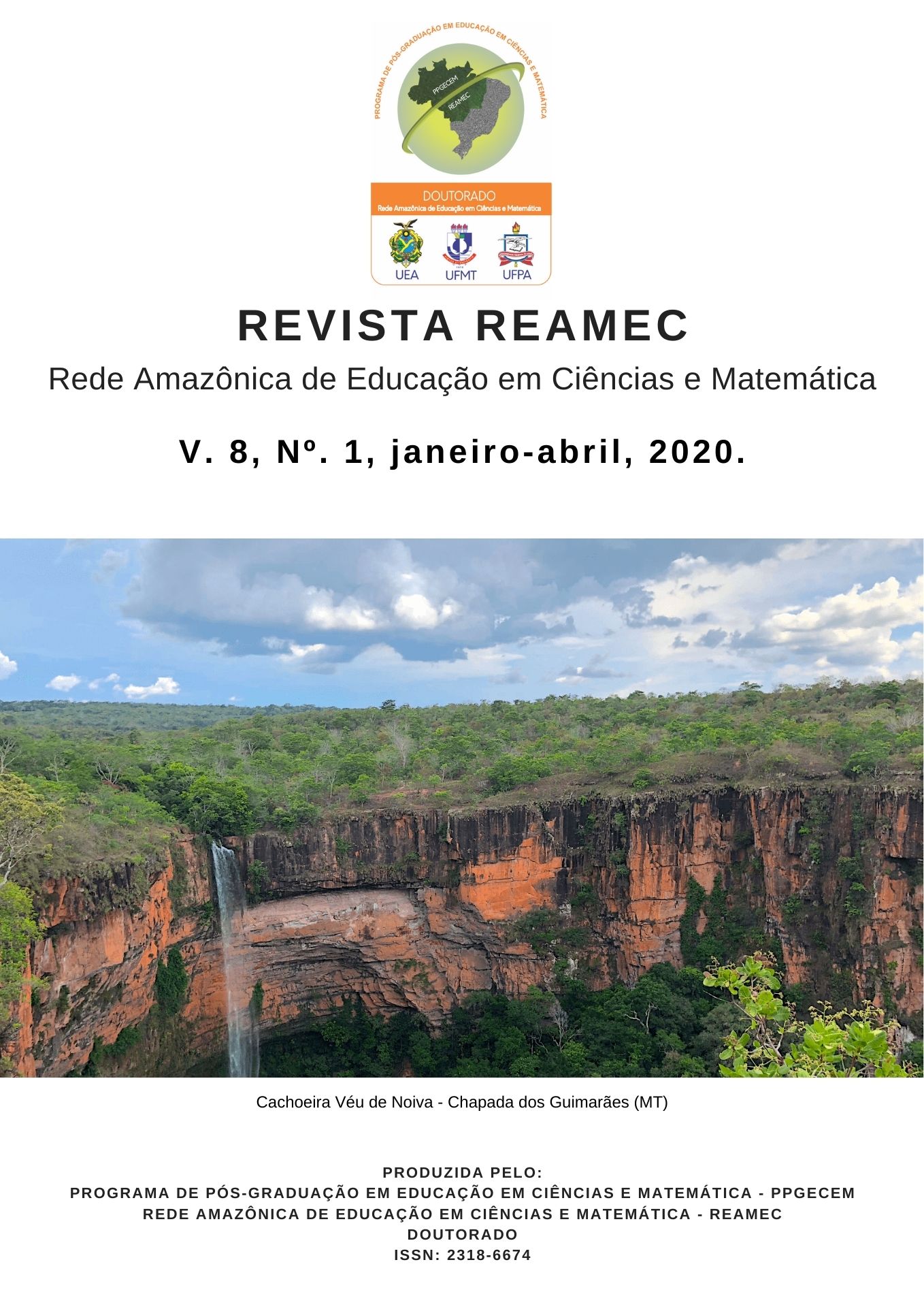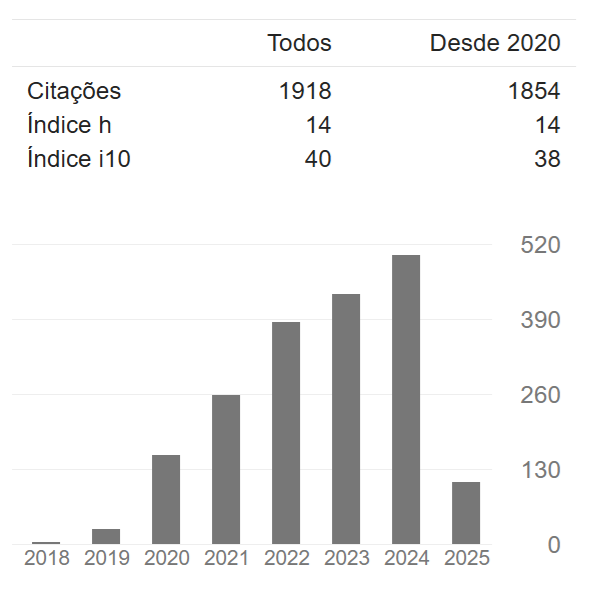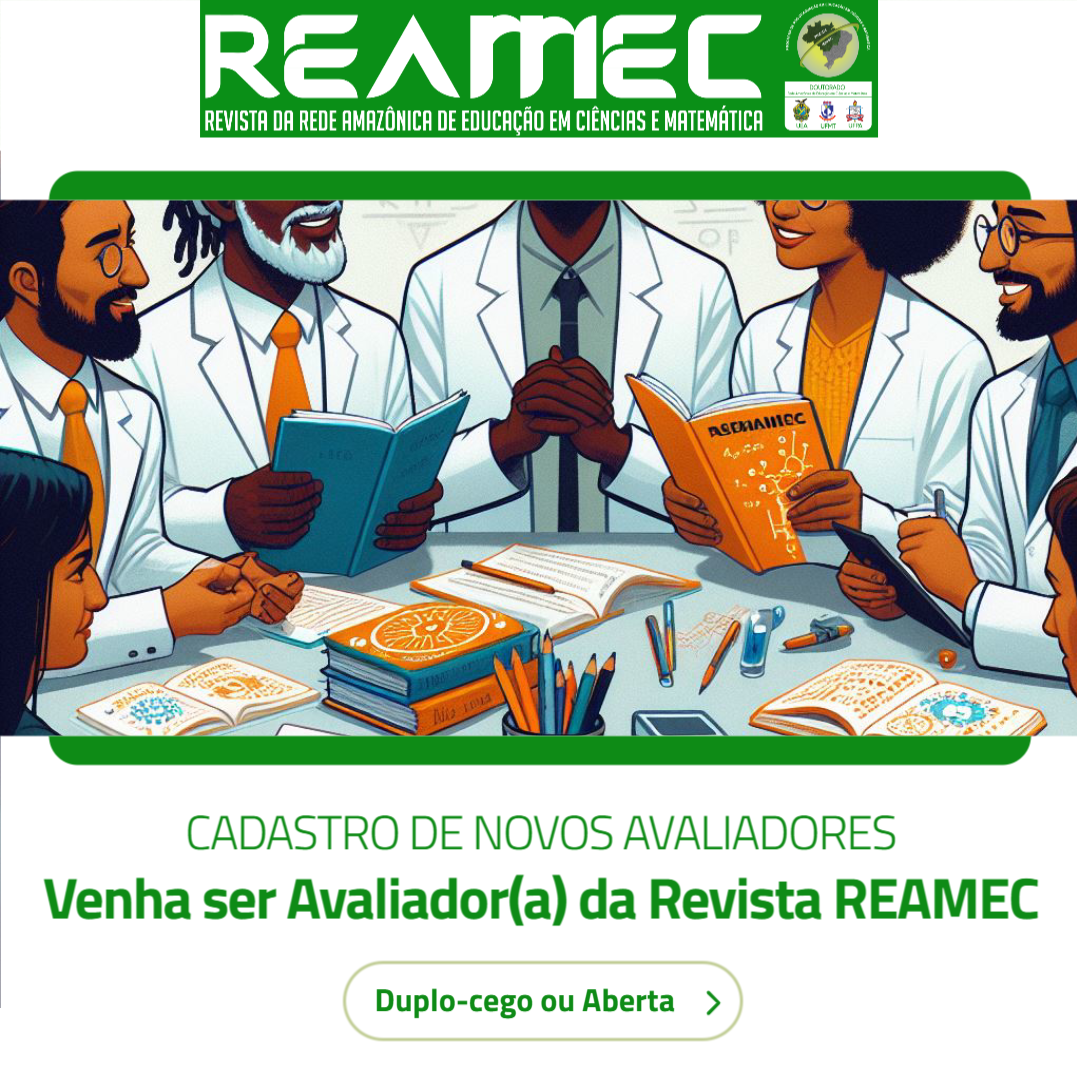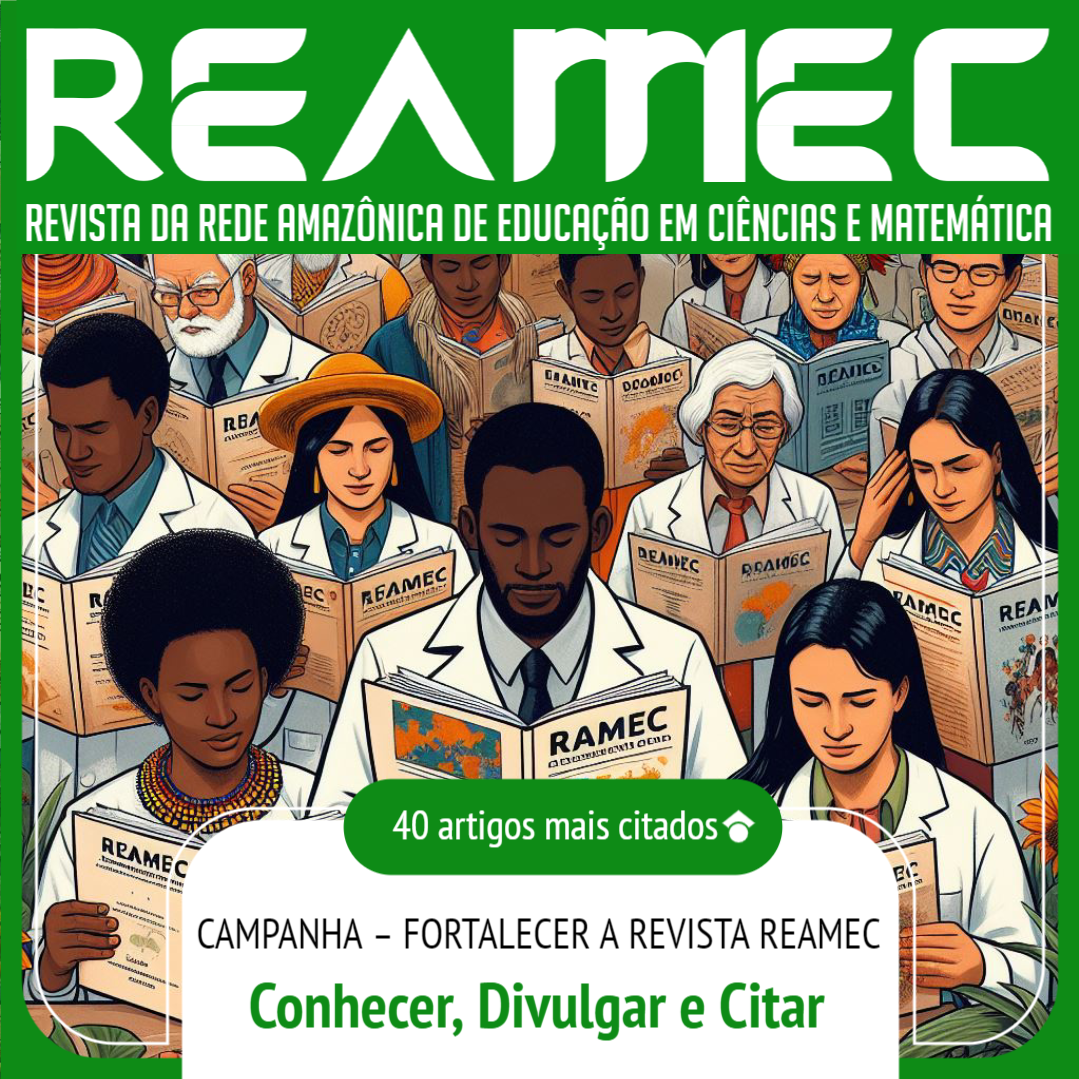WHY SHOULD WE SPEAK ABOUT A COMPLEMENTARITY OF SENSE AND REFERENCE?
DOI:
https://doi.org/10.26571/reamec.v8i1.9197Palavras-chave:
Semiotics. Complementarity. Language. Mathematics.Resumo
Until around 1800, Western philosophy believed that there were two types of conception in the world: the mental and the physical. Hence the extensive discussions about the analytical and synthetic knowledge that dominated the philosophy of Kant, the greatest Enlightenment philosopher. However, from the Peircean studies, the discussion about the conceptions has expanded, giving rise to the complementarity, which currently addresses the conceptions of extension and intensionof logic and philosophy. In the educational context it is often claimed that mathematics is a language, since it provides both a means of communication and a substantiation of our thoughts. As a result, mathematical fluidity is now considered the most important. From this perspective, the pedagogical principles underlying mathematics teaching become similar to those used in language teaching. But mathematics is not mere language. Language is a wonderful instrument of the human spirit, yet it serves logic, poetics, and rhetoric far better than mathematics. Thus, this article aims to show that the approach of elementary mathematics education must consist in teaching to read a term beyond its correspondence between letters and sounds, and also to permit the understanding how a skill set can be worked completely in abstract in relation to content. The semiotic methodology is utilized as input to analyze what is really the mathematics.
Downloads
Referências
ADAM, C.; MILHAUD, G. (eds.). Descartes Correspondence. Paris: Alcan, 1936.
BARROW, J. D. Perche il mondo e matematico? Roma/Bari: Lezioni italiane, Laterza, 1992.
BOCHNER, S. The Role of Mathematics in The Rise of Science. Princeton: Princeton University Press, 1966.
CASSIRER, E. Substance and Function, New York: Dover, 1953.
DESCARTES, R. Discourse on Method. Vol. XXXIV, Part 1. The Harvard Classics. New York: P.F. Collier & Son, 1909–14; Bartleby.com, 2001.
EFFROS, E. G. Mathematics as Language. In: DALES, H. G.& OLIVERI, G. (Eds.), Truth in Mathematics. Oxford: Oxford University Press, 1998, 131-146.
EUCLIDES. Os Elementos. Tradução de Irineu Bicudo. Rio Claro: UNESP, 2009.
EULER, L. Vollständige Anleitung zur Algebra. Leipzig: Reclam, 1770.
FREGE, F. L. G. Funktion, Begriff, Bedeutung. Göttingen: Vandenhoeck+Ruprecht, 1969.
FRIEDMAN, M. Kant and the Exact Sciences. Cambridge (Massachuesetts): Harvard University Press, 1992.
FONSECA, R. F. A Complementaridade entre os Aspectos Intensional e Extensional na Conceituação de Número Real Proposta por John Horton Conway. 2010. 182 f. Tese (Doutorado em Educação Matemática). Pontifícia Universidade Católica de São Paulo, São Paulo, 2010. Disponível em: https://tede2.pucsp.br/bitstream/handle/10843/1/Rogerio%20Ferreira%20da%20Fonseca.pdf. Último acesso em: 24 nov. 2019.
FOUCAULT, M. The Order of Things. New York: Vintage Books, 1973.
FOWLER, D. The Mathematics of Plato´s Academy. Oxford: Clarendon Press, 1987.
GELLNER, E. A. Reason and culture. Oxford: Blackwell, 1992.
GOWERS, W. T. Two Cultures in Mathematics, in: V. I. Arnold, et al (eds), Mathematics: Frontiers and Perspectives. Providence: AMS Publ., 2000.
HACKING, I. M. Leibniz and Descartes: Proof and Eternal Truths, in: T. Honderich (Ed), Philosophy Through its Past. London: Pelican Books, 1984, 211-224.
HAHN, H. Empirismus, Logik, Mathematik. Frankfurt: Suhrkamp, 1988.
HAMANN, G. In: MAJETSCHAK, S., (ed.). Vom Magus im Norden und der Verlegenheit des Geistes: Ein Hamann Brevier. Munich: DTV, 1988.
HERSH, R. What is Mathematics really? Oxford: Oxford University Press, 1997.
KANT, I. Critique of Pure Reason. Second edition. 1787. English translation: Norman Kemp Smith. Edinburgh: MacMillan, 1929.
KUHN, T. A Function for Thought Experiments (1964), reprinted in T. Kuhn, The Essential Tension. Chicago: University of Chicago Press, p.240–265, 1977.
KLEIN, J. Greek Mathematical Thought and the Origin of Algebra. New York: Dover Publications, 1992.
KOLMOGOROV, A. N. Zur Deutung der intuitionistischen Logik. Math. Zeitschrift. Vol. 35, p. 58-65, 1932.
MUELLER, I. Euclid’s Elements and the Axiomatic Method. The British Journal for the Philosophy of Science 20, p.289-309, 1969.
NAHIN, P. The Story of √-1. Princeton: Princeton University Press, 1998.
NOVALIS. Schriften. Zweite, nach den Handschriften ergänzte, erweiterte und verbesserte Auflage in vier Bänden. Edited by Paul Kluckhohn and Richard Samuel. 4 vols. Stuttgart: W. Kohlhammer, 1960.
OTTE, M. F. Arithmetic and Geometry - Some Remarks on the Concept of Complementarity. Studies in Philosophy and Education, [S.l.], v. 10, p. 37–62,1990.
PEIRCE, C. S.: CP = Collected Papers of Charles Sanders Peirce. Vol. I-VI, ed. by Charles Hartshorne and Paul Weiß, Cambridge, Mass. (Harvard UP) 1931-1935, Vol. VII-VIII, ed. by Arthur W. Burks, Cambridge, Mass. (Harvard UP), 1958 (quoted by no. of volume and paragraph). [Para as referências a esta obra, utilizamos o sistema internacional de indicação das iniciais, CP, seguidas do número do volume e do livro].
PLATO. P.: complete works. Edited with an introduction and John M. Cooper. Indianapolis and Cambridge: Hackett Publishing Company, 1997.
QUINE, W. V. O. The Roots of Reference. La Salle, III.: Open Court, 1974.
RUSSELL, B. A. W. Introduction into Mathematical Philosophy. London: Routledge, 1998.
RYRIE, A. Protestants. London: William Collins, 2017.
SALLOWS, L. C. F. A Curious New Result in Switching Theory. In: The Mathematical Intelligencer, vol. 12, p.21-32, 1990.
SCHÜLING, H. Die Geschichte der axiomatischen Methode in 16. und beginnenden 17. Jahrhundert: (Wandlung der Wissenschaftsauffassung). Hildesheim and New York: Georg Olms-Verlag, 1969.
WIENER, N. Pure and applied mathematics. In: Paul Henle et al. (ed.). Structure, method and meaning. New York: The Liberal Arts Press, 1951.
ZILSEL, E. The social origins of modern science. Dordrecht: Kluwer, 2003.
Publicado
Edição
Seção
Como Citar
Licença
Copyright (c) 2020 REAMEC - Rede Amazônica de Educação em Ciências e Matemática

Este trabalho está licenciado sob uma licença Creative Commons Attribution-NonCommercial 4.0 International License.
Política de Direitos autorais
Os autores mantêm os direitos autorais de seus trabalhos publicados na Revista REAMEC, atendendo às exigências da Lei nº 9.610, de 19 de fevereiro de 1998, que altera, atualiza e consolida a legislação sobre direitos autorais e dá outras providências, enquanto a revista utiliza um modelo de licenciamento que favorece a disseminação do trabalho, particularmente adotando a Licença Creative Commons Attribution-NonCommercial 4.0 International (CC BY-NC 4.0).
Os direitos autorais são mantidos pelos autores, os quais concedem à Revista REAMEC os direitos exclusivos de primeira publicação. Os autores não serão remunerados pela publicação de trabalhos neste periódico. Os autores têm autorização para assumir contratos adicionais separadamente, para distribuição não exclusiva da versão do trabalho publicado neste periódico (ex.: publicar em repositório institucional, em website pessoal, publicar uma tradução, ou como capítulo de livro), com reconhecimento de autoria e publicação inicial neste periódico. Os editores da Revista têm o direito de realizar ajustes textuais e de adequação às normas da publicação.
Política de Acesso Aberto/Livre
Os manuscritos publicados na Revista REAMEC são acessíveis gratuitamente sob o modelo de Acesso Aberto, sem cobrança de taxas de submissão ou processamento de artigos dos autores (Article Processing Charges – APCs). A Revista utiliza Licença Creative Commons Attribution-NonCommercial 4.0 International (CC BY-NC 4.0) para assegurar ampla disseminação e reutilização do conteúdo.
Política de licenciamento - licença de uso
A Revista REAMEC utiliza a Licença Creative Commons Attribution-NonCommercial 4.0 International (CC BY-NC 4.0). Esta licença permite compartilhar, copiar, redistribuir o manuscrito em qualquer meio ou formato. Além disso, permite adaptar, remixar, transformar e construir sobre o material, desde que seja atribuído o devido crédito de autoria e publicação inicial neste periódico.























































































